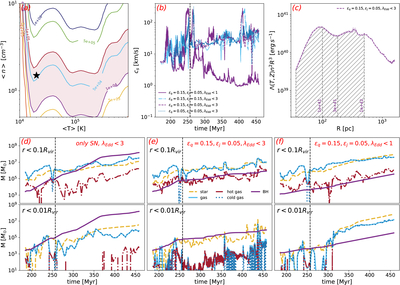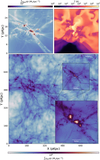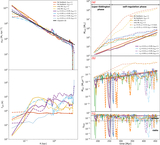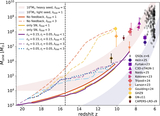Image Details

Caption: Figure 3.
(a) The distribution of the transition BH mass ﹩{M}_{{\rm{sink}}}^{t}﹩ determined by the average gas density 〈n〉, and the average gas temperature 〈T〉. The black star represents the typical value obtained from our simulations, while the red region highlights the range where ﹩{M}_{{\rm{sink}}}^{t}﹩ falls between 104 and 105 M⊙. (b) The time evolution of the sound speed near the BH, cs. (c) The squared gas density in spherical shells as a function of radius centered on the BH times radius cubed, n2R3, where the area under the curve is proportional to the cooling rate contribution. (d, e, f) The evolution of stellar mass, total gas mass, hot gas mass, and cold gas mass over time for two regions: the galaxy region (0.1Rvir) and the BH region (0.01Rvir). Panel (d) corresponds to the SN-only case with λEdd < 3; panel (e) to ϵq = 0.15, ϵj = 0.05, and λEdd < 3; and panel (f) to ϵq = 0.15, ϵj = 0.05, and λEdd < 1. Once SMBHs reach masses of 104–105 M⊙, their growth transitions to a self-regulated phase, driven by AGN feedback that expels gas from the surrounding region. This process ultimately regulates accretion, with higher accretion rates leading to stronger feedback.
Copyright and Terms & Conditions
© 2025. The Author(s). Published by the American Astronomical Society.






